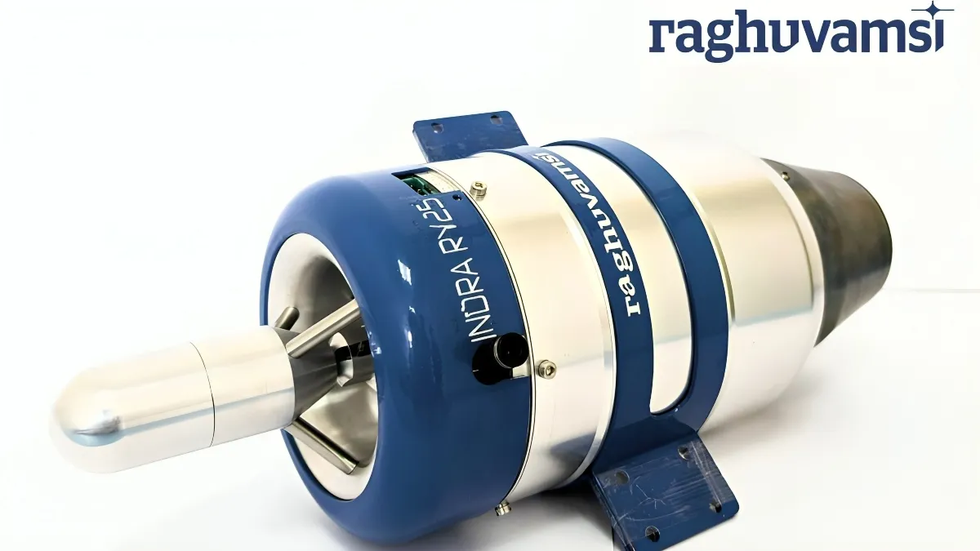About the INDRA RV25: 240N
- It is a micro turbojet engine.
- It is designed and developed indigenously by Hyderabad-based firm Raghu Vamsi Machine Tools with support from IIT Hyderabad.
- It has primarily been developed for unmanned aerial vehicles (UAVs) or drones.
- The engine has applications in UAVs, air taxis, jetpacks, auxiliary power units, range extenders, and power generation in the future.
What is a turbojet engine?
- A turbojet engine is a jet engine which produces all of its thrust by ejecting a high-energy gas stream from the engine exhaust nozzle.
- In contrast to a turbofan or bypass engine, 100% of the air entering the intake of a turbojet engine goes through the engine core.
- Components: The component parts of a turbojet engine are the inlet, the gas turbine engine, consisting of a compressor, a combustion chamber and a turbine, and the exhaust nozzle.
- Working:
- Air is drawn into the engine through the inlet and compressed and heated by the compressor.
- Fuel is then added to the combustion chamber and ignited.
- The burning fuel adds energy to the exhaust stream by heating and expanding the air.
- Sufficient energy to drive the compressor is extracted from the exhaust stream by the turbine.
- The remainder of the exhaust energy is used to produce thrust, a process which is enhanced by the geometry of the exhaust nozzle.
- As the exhaust gas passes through the nozzle, it is accelerated to high speed as it expands, thus providing propulsion.
- The thrust produced by the engine can be selectively increased by incorporating an afterburner or re-heat into the engine design.
- Turbojet aircraft work on the principle of accelerating a relatively small mass of air to a high speed.
- As optimum efficiency is achieved when the speed of the accelerated air approximates that of the aircraft, turbojet engines do not reach peak efficiency until speeds approach Mach 2.
- Thus, turbojets have relatively poor propulsive efficiency at lower airspeeds, limiting their usefulness to high-speed aircraft.
